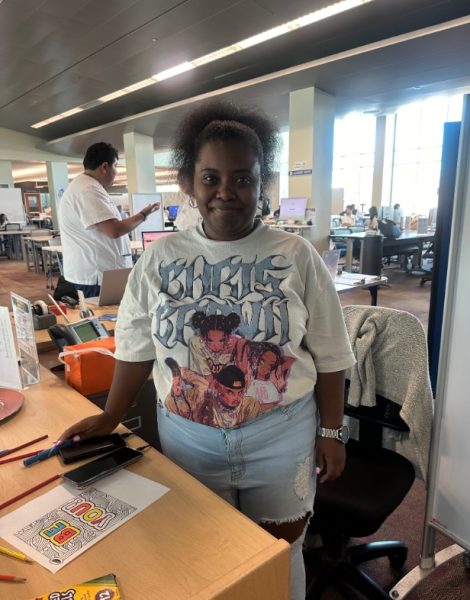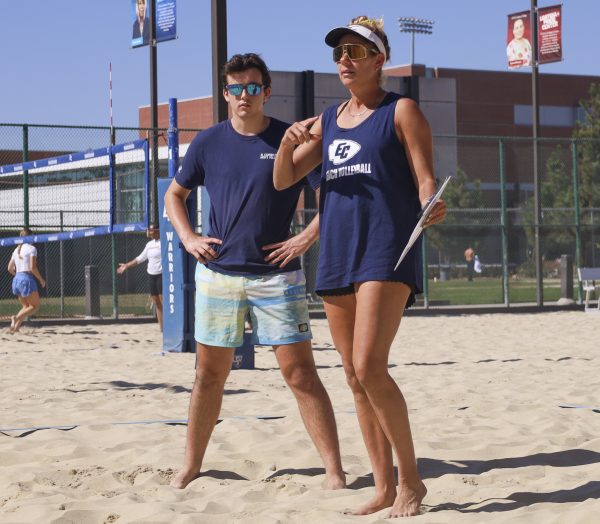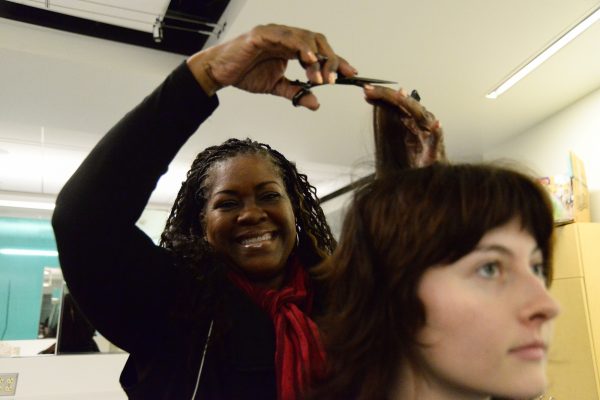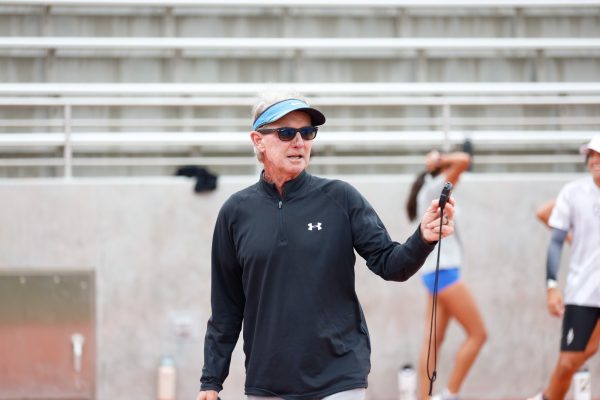Testing the waters: The process of publishing a quaran-zine
![Emma Schlossman holding volume one of the Kitchen Sink Zine, a zine she and Misha Hashemi published. "[This] zine has a lot to do with identity, personal experiences, and self-expression," Schlossman says. Photo taken on September 15. Safia Ahmed/The Union](https://eccunion.com/wp-content/uploads/2021/09/kichensinkzine-2.jpg)
Emma Schlossman holding volume one of the Kitchen Sink Zine, a zine she and Misha Hashemi published. “[This] zine has a lot to do with identity, personal experiences, and self-expression,” Schlossman says. Photo taken on September 15. Safia Ahmed/The Union
Freshly cut newspaper clippings cover the tables of South Bay’s youthful artists, while mounds of brightly colored paper await creation.
Emma Schlossman, a 19-year-old studio art major at El Camino College (ECC), and her friend, Misha Hashemi, a student at Cal State Long Beach, worked throughout the COVID-19 pandemic to co-publish a zine with the creative work of students and artists in the South Bay area.
According to Salford Zine Library, a zine is short for magazine, most commonly a small-circulation self-published work of original or appropriated content.
Schlossman published her very first zine, The Kitchen Sink, at the beginning of May.
“We started creating the zine at the beginning of the pandemic, so we couldn’t really see each other. We shared ideas through a Google Doc then we started creating images,” Schlossman said.
During the creative process, the designers would send Schlossman their artwork and she started scanning them from a printer and uploading them to her computer. She used the computer program InDesign to compile the art pieces into a book.
“Once we had everything in order, we made an Instagram account for the zine so we could connect to other zine accounts and with our friends,” Schlossman said.
Schlossman and Hashemi hoped to learn from this experience as female-identifying artists with crucial roles in the zine’s concept of the intersection of race, gender, identity and belonging, which was an idea inspired after Schlossman was fond of a two-page spread Hashemi created that touched on the topic of gender roles.
“One page has newspaper clippings of articles she found about womanhood and the other page is about being a man,” Schlossman said.
Their title was inspired by the saying ‘everything and the kitchen sink’. However, the process of completing the framework was harder for Schlossman.
“We wanted to test the water without having to pick a certain theme for the zine,” Schlossman said. “We found throughout all the work we made and what others submitted that the zine had a lot to do with identity, personal experiences, and self-expression.”
Hashemi said that the zine provided a scope of what it’s like to be a young person in LA, as the Kitchen Sink zine was a learning experience for Schlossman and Hashemi both as artists and students in the South Bay area.
Hashemi also wanted to provide a platform where her friends and other local artists could share their artwork while having a portion of the proceeds go to a good cause, and Schlossman’s intention was to bring everything together and create a finished project.
“The process of making the zine inspired what we wanted to do forward, I think the second zine will dive deeper into ideas that have to do with identity,” Schlossman said.
Melody McCants, 25, worked as a designer for the zine. McCants graduated from CSULB in 2018 and received her bachelor’s in creative writing, currently pursuing an art teaching credential.
“The way I was involved [in the zine] was through my friendship with Misha,” McCants said.
McCants’s participation in the zine was mainly sending the sketches to the founders and contributing to the many meaningful art pieces in it.
“The subject matter was mostly drawing practice but I’d add a twist,” McCants said. “There was one where I drew a wolf skull and drew some flames.”
McCants said that her artworks have never been in a zine before which made her glad to be among Kitchen Sink’s contributors.
As the zine released, Schlossman and Hashemi also contributed a portion of the money made on the first 50 sales of Kitchen Sink to the Black Women for Wellness charity, as it also dealt with the concepts of intersection of race and gender, much like the content of the zine.
“When we started the zine it was near the beginning of the pandemic, around the time it was June when the Black Lives Matter protests were at its peak,” Schlossman said. “And we thought, ‘well, we’re gonna be selling it,’ so [donating] was kind of what we could do to make a difference.”
Along with the perspectives of different artists from the South Bay, ECC classes also encouraged Schlossman to take on new experiences and develop communication skills.
“Even though public speaking is not my strong suit, one of the teachers I took public speaking with gave me the courage to publish the zine,” Schlossman said.
Schlossman had recently taken her communications 100 class with Casey Jones, an adjunct communications studies professor at ECC, where Schlossman gave a speech about the history and impact of zines.
“I was super impressed. I read [the Kitchen Sink] zine and what’s interesting was that she gave her speech during virtual office hours and the students that were there had shown an interest in it,” Jones said.
Jones learned more about zines from Schlossman’s speech. She is grateful to teach a class where she can inspire confidence in students.
“I feel so great to have encouraged Emma, she had this creative idea and she went with it,” Jones said.
Schlossman is looking forward to making a second volume of Kitchen Sink and hopes to work on her own solo zine.
“You don’t have to make a zine just to sell, you can make it for your own self-fulfillment,” Schlossman said.








